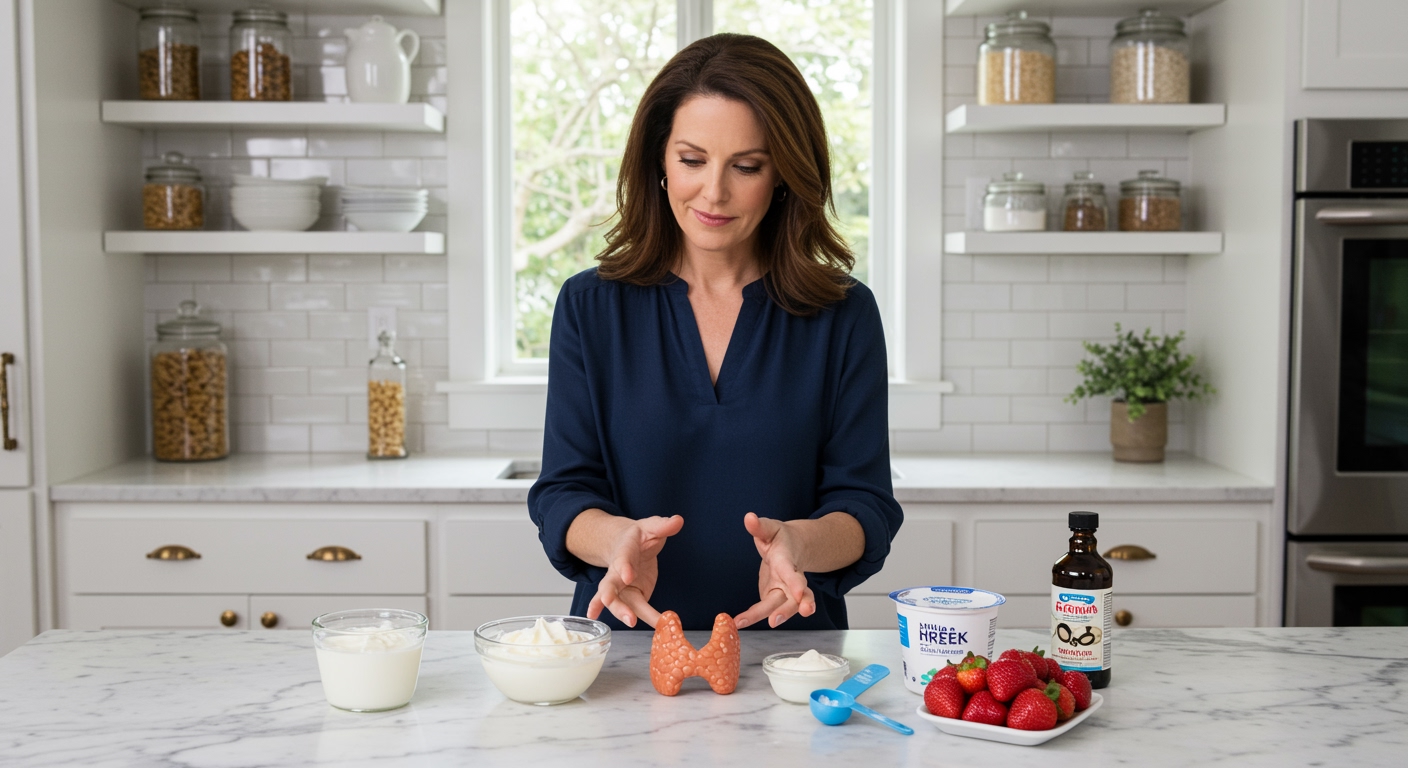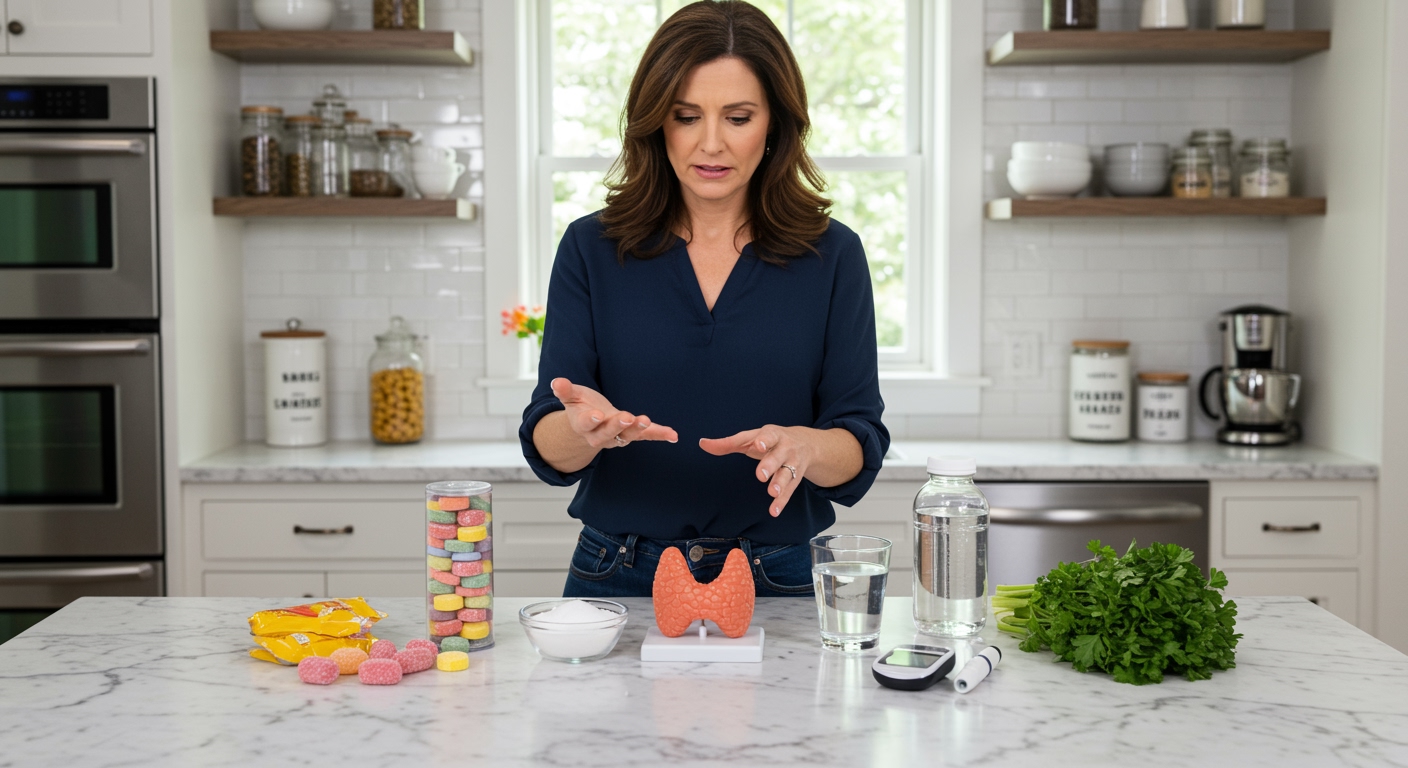✪ Key Takeaway: Frosting is not always bad for hypothyroidism when consumed in moderation and made with thyroid-friendly ingredients.
Introduction
You probably heard that people with hypothyroidism should avoid all sweets including frosting.
This belief creates unnecessary stress during celebrations and makes you feel guilty about enjoying simple pleasures.
Hi, I’m Abdur, your nutrition coach and today I’m going to explain why frosting is not automatically forbidden with hypothyroidism and how you can make smart choices that support your thyroid health.
What Makes Frosting Potentially Problematic For Thyroid Health?
The main concern with frosting centers around its high sugar content and certain ingredients that might interfere with thyroid function.
Most commercial frostings contain refined sugar that causes rapid blood glucose spikes followed by crashes.
These blood sugar fluctuations can worsen hypothyroidism symptoms like fatigue and brain fog.
Some frostings also contain artificial colors and preservatives that may trigger inflammation in sensitive individuals.
Inflammation interferes with the conversion of inactive thyroid hormone T4 into active T3 that your body actually uses.
Additionally, many store-bought frostings include soy lecithin as an emulsifier.
Soy contains compounds called goitrogens that can interfere with thyroid hormone production when consumed in large amounts regularly.
✪ Fact: Goitrogens are substances that interfere with iodine uptake in the thyroid gland, potentially affecting hormone production.
Does Sugar Directly Damage Your Thyroid Function?
Sugar itself does not directly damage your thyroid gland or stop it from producing hormones.
However, excessive sugar consumption creates a cascade of metabolic problems that indirectly affect thyroid health.
High sugar intake leads to insulin resistance over time.
Insulin resistance reduces the conversion of T4 to T3, making your hypothyroidism symptoms worse even when your medication dose seems correct.
Excess sugar also promotes chronic inflammation throughout your body.
This inflammation affects the hypothalamus-pituitary-thyroid axis, which is the communication system that regulates your thyroid hormone levels.
The real problem is not eating frosting once at a birthday party but consuming high-sugar foods daily without awareness of total intake.
✪ Note: The T4 to T3 conversion happens primarily in your liver, kidneys, and other tissues outside the thyroid gland itself.
Can You Make Thyroid-Friendly Frosting At Home?
Yes, you can absolutely create delicious frosting that supports rather than harms your thyroid health.
The key is choosing quality ingredients and controlling the amount of sweetener you use.
Start with a base of Greek yogurt or cream cheese instead of butter and shortening.
Greek yogurt provides protein that slows sugar absorption and prevents the blood glucose spikes that worsen thyroid symptoms.
For sweetness, use moderate amounts of honey or maple syrup instead of refined white sugar.
These natural sweeteners contain trace minerals and antioxidants that refined sugar lacks.
Add flavor with vanilla extract, cocoa powder, or fruit purees rather than artificial flavors and colors that may trigger inflammation.
✪ Pro Tip: Mix Greek yogurt with a small amount of honey and vanilla extract for a simple, protein-rich frosting alternative.
How Much Frosting Can You Safely Eat With Hypothyroidism?
The answer depends on your overall diet quality and how well your hypothyroidism is managed.
If you eat a nutrient-dense diet most of the time, occasional frosting will not derail your thyroid health.
A reasonable portion is about two tablespoons of frosting at special occasions.
This amount satisfies your desire for something sweet without causing significant blood sugar disruption.
The problem occurs when people eat frosting or other high-sugar treats daily as part of their regular eating pattern.
Daily consumption creates the chronic inflammation and insulin resistance that interfere with thyroid hormone function.
Think of frosting as a celebration food rather than an everyday staple in your diet.
✪ Fact: Your body can handle occasional indulgences much better when your baseline diet provides adequate protein, healthy fats, and micronutrients.
What Should You Check On Store-Bought Frosting Labels?
Always flip the container and read the ingredient list before purchasing any frosting.
Look for products with shorter ingredient lists that contain recognizable food items.
Avoid frostings that list partially hydrogenated oils or trans fats in any amount.
These artificial fats promote inflammation and interfere with the cellular processes your thyroid hormones regulate.
Check for artificial colors like Red 40, Yellow 5, or Blue 1.
Some research suggests these synthetic dyes may trigger immune responses in sensitive individuals with autoimmune thyroid conditions.
Also watch for high fructose corn syrup listed as the first or second ingredient, as this indicates an extremely high sugar concentration that will cause rapid blood glucose spikes.
✪ Pro Tip: Ingredients are listed in descending order by weight, so the first few items make up most of the product.
The Bottom Line
Frosting is not automatically bad for hypothyroidism when you choose quality ingredients and practice moderation.
Your overall eating pattern matters far more than any single food or occasional treat.
I would love to hear your thoughts about managing hypothyroidism while still enjoying life’s sweet moments, so please share your questions or experiences in the comments below.
References
At NutritionCrown, we use quality and credible sources to ensure our content is accurate and trustworthy. Below are the sources referenced in writing this article:
- MedlinePlus: Hypothyroidism
- Mayo Clinic: Hypothyroidism Diet
- Cleveland Clinic: Hypothyroidism
- Healthline: Hypothyroidism Diet





